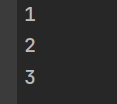
클래스 메소드
이전 클래스 포스트에서 소개해드린대로 클래스 메소드를 구현해보면 다음과 같습니다.
class Student {
constructor(protected name: string) {}
printInfo: () => void = function (): void {
console.log(`이름: ${this.name}`);
}
}이렇게 보니 좀 복잡하고 지저분한 감이 있지않아서 타입스크립트에서는 이것을 간단하게 줄여쓸 수 있도록 단축 구문을 제공합니다. 위의 printInfo() 메소드를 단축구문을 이용해서 줄여보겠습니다.
class Student {
constructor(protected name: string) {}
printInfo(): void {
console.log(`이름: ${this.name}`);
}
}또한 메소드 앞에 static 키워드를 붙여 정적 메소드로 만들 수 있습니다. 정적 메소드란, 인스턴스 생성 없이도 호출 할 수 있는 메소드를 의미합니다.
class Student {
constructor(protected name: string) {}
static printInfo(): void {
console.log(`이름: ${this.name}`);
}
}메소드 체인
메소드 체인이란 객체의 메소드들을 연속해서 호출하는 방식입니다.
Obj.method1().method2().method3().method4();타입스크립트에서 메소드 체인을 구현하는 방법은 메소드의 마지막에 this를 반환하면 됩니다.
class Obj {
method1() {
console.log('1');
return this;
}
method2() {
console.log('2');
return this;
}
method3() {
console.log('3');
return this;
}
}
let obj = new Obj();
obj.method1().method2().method3(); 이러한 결과가 나오는 것은 객체의 메소드 내부에서 사용된 this는 해당 메소드를 가리키기 때문입니다. 즉 위 코드를 실행 순서로 다시 살펴보면 아래와 같이 실행됩니다.
이러한 결과가 나오는 것은 객체의 메소드 내부에서 사용된 this는 해당 메소드를 가리키기 때문입니다. 즉 위 코드를 실행 순서로 다시 살펴보면 아래와 같이 실행됩니다.
//실행전
obj.method1().method2().method3();
//method1()실행 후 return this;
//return this는 호출한 객체인 obj가 됩니다.
obj.method2().method3();
//method2()실행 후 return this;
obj.method3();